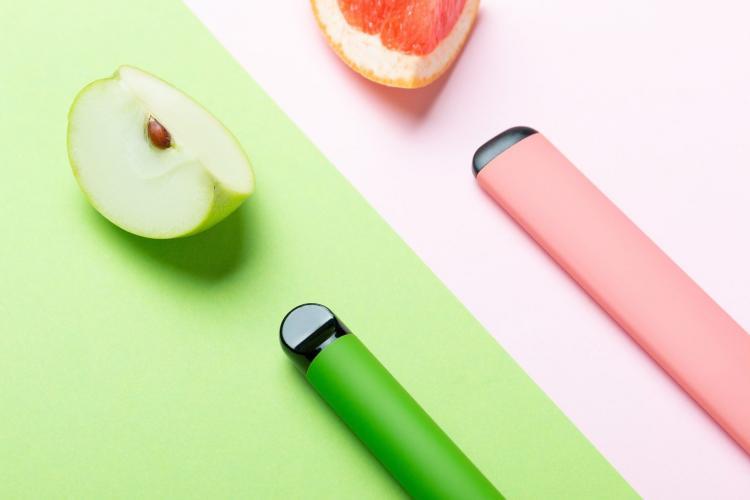
The latest discovery comes amid the announcement by the US FDA to ban the sale of mint and non-tobacco flavors in pod vapes. In order to determine whether e-cigarettes marketed as having a "tobacco flavor" contain chemical substances such as sweet flavors and fruit flavors, researchers used a database that contained information on the chemical composition and levels of additives in e-liquids since 2010 to identify trends and changes.
A group of researchers compared the quantity and types of flavoring chemicals found in 63 different tobacco-flavored e-cigarette refill fluids and two popular e-cigarette brands, Juul and Puff, sold between 2011 and 2019. They discovered that there were almost no flavoring chemicals present in tobacco-flavored products purchased in 2010 and 2011.
Nearly two-thirds (63%) of flavoring chemicals in e-cigarette liquids purchased prior to 2019 contained less than 2 milligrams per milliliter, with the majority (84%) containing less than 5 milligrams per milliliter.
The total number and levels of flavoring chemicals in the "tobacco-flavored" e-liquid and Puff Bar tobacco-flavored electronic cigarettes purchased in 2019 were higher than expected.
In 2019, over half (54%) of the 13 supplement products purchased contained a total flavoring chemical content greater than 10 milligrams/milliliter. Products with a total seasoning chemical exceeding 10 milligrams/milliliter contained 1 to 5 major seasoning chemicals (each exceeding 1 milligram/milliliter).
The five most commonly used flavoring chemicals in "tobacco-flavored" e-cigarette liquids are fruity and caramel flavors: ethyl maltol (sweet or caramel flavor, 60%); corylone (caramel, maple, 44%); menthol (33%); vanillin (25%); and maltol and glyceryl triacetate (fruit, cream flavors, 24%).
Nine different chemical substances used to create sweet and fruity flavors in products purchased in 2016 and 2019 were found to have levels exceeding 2 milligrams per milliliter.
The flavor chemical content in Juul Classic and Juul Virginia is below 0.35 milligrams per milliliter, with individual chemical content typically equaling or below 0.05 milligrams per milliliter.
According to researchers, different flavoring chemicals were intentionally added to Classic and Virginia products to create distinct tastes for each product.
On the other hand, the "tobacco-flavored" Puff Bar contains 27 different flavor chemicals, with a total content of 34.3 mg/mL. The range of individual chemicals is from 0.03 to 15 mg/mL.
A group of researchers has found that four types of chemical additives commonly used in sweet-flavored electronic cigarettes – vanillin, ethyl maltol, ethyl vanillin, and corylone – contain high levels of the compounds, ranging from 2.07 to 15 milligrams per milliliter. These additives are often found in popular e-cigarette flavors like Dewberry Cream. The researchers caution young e-cigarette users to be aware of the potential risks associated with these chemicals.
The main flavor chemicals found in these two brands were compared, and it was discovered that Puff had 300 times the amount of vanillin as Juul, and 239 times the amount of ethylvanillin, as well as 41 times the amount of caryophyllene.
The total number of flavor chemicals used in Puff Bar Tobacco exceeds the total amount of chemicals found in nearly all (94%) evaluated e-liquids.
Researchers pointed out that concerns had previously been raised regarding the safety of inhaling these high concentrations of flavor chemicals.
While the Flavor and Extract Manufacturers Association (FEMA) generally considers these specific flavors to be safe, FEMA has not yet assessed their inhalation toxicity.
Researchers said in a press release that the FDA has two reasons to identify and quantify flavoring chemicals before approving tobacco products for market (PMTA). They wrote, "Firstly, flavoring chemicals are often used in e-cigarette oils without safety data and at concentrations far higher than in other consumer products." "Secondly, our data shows that e-cigarette manufacturers are manipulating e-cigarette oil formulas, apparently to circumvent regulations on flavored chemical additives.
Statement:
This article is compiled from third-party information and is intended for industry professionals for sharing and educational purposes.
This article does not reflect the views of 2FIRSTS, and 2FIRSTS is unable to confirm the truthfulness and accuracy of the content. The translation of this article is only intended for industry exchange and research purposes.
Due to limitations in our ability to translate accurately, this article may not convey the exact same meaning as the original. Please refer to the original text for accuracy.
2FIRSTS maintains complete alignment with the Chinese government on any domestic, Hong Kong, Macau, Taiwan, or foreign-related statements and stances.
The copyright of the compiled information belongs to the original media and author. If there is any infringement, please contact us to have it removed.
This document has been generated through artificial intelligence translation and is provided solely for the purposes of industry discourse and learning. Please note that the intellectual property rights of the content belong to the original media source or author. Owing to certain limitations in the translation process, there may be discrepancies between the translated text and the original content. We recommend referring to the original source for complete accuracy. In case of any inaccuracies, we invite you to reach out to us with corrections. If you believe any content has infringed upon your rights, please contact us immediately for its removal.






